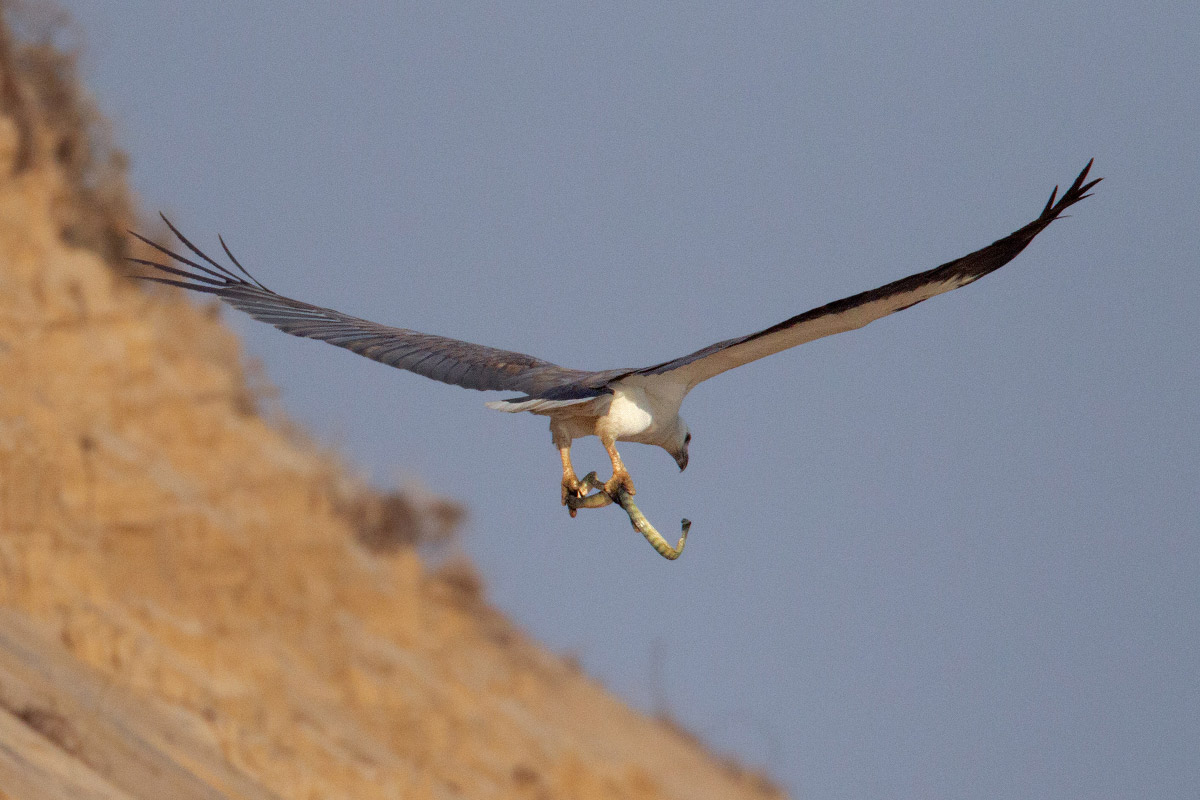
As air breathers, sea snakes (Hydrophiinae) have to rise to the surface regularly, making them vulnerable to air-borne predators like this white-bellied sea eagle (Haliaeetus leucogaster). Although most sea snakes have potent neurotoxic venom, they have small fangs, and are generally reluctant to bite. While it is not known if the eagle is immune to the snake’s venom, it is likely that the tough scales on its feet and the thick feathers on its legs offer it a measure of protection, should it get bitten.
The white-bellied sea eagle is distributed widely, from the west coast of India all the way to Australia. Although the species is listed as ‘Least Concern’ by the IUCN, it has declined in many parts of its range. Chilika lake is among the few places on the east coast of India where it can still be regularly sighted. They can be seen nesting in tall Ficus and Casuarina trees, as well as on cell phone towers around the lake.

 CI is a non-profit, non-commercial portal that aims to facilitate wildlife and nature conservation by providing reliable information and the tools needed to campaign effectively.
CI is a non-profit, non-commercial portal that aims to facilitate wildlife and nature conservation by providing reliable information and the tools needed to campaign effectively.



Chosen as 'Picture of the Week'
A white-bellied sea eagle soars away with its prey, a sea snake, near the Chilika coast. This eagle is distributed widely, from the west coast of India all the way to Australia, but has declined drastically in some parts of its range.